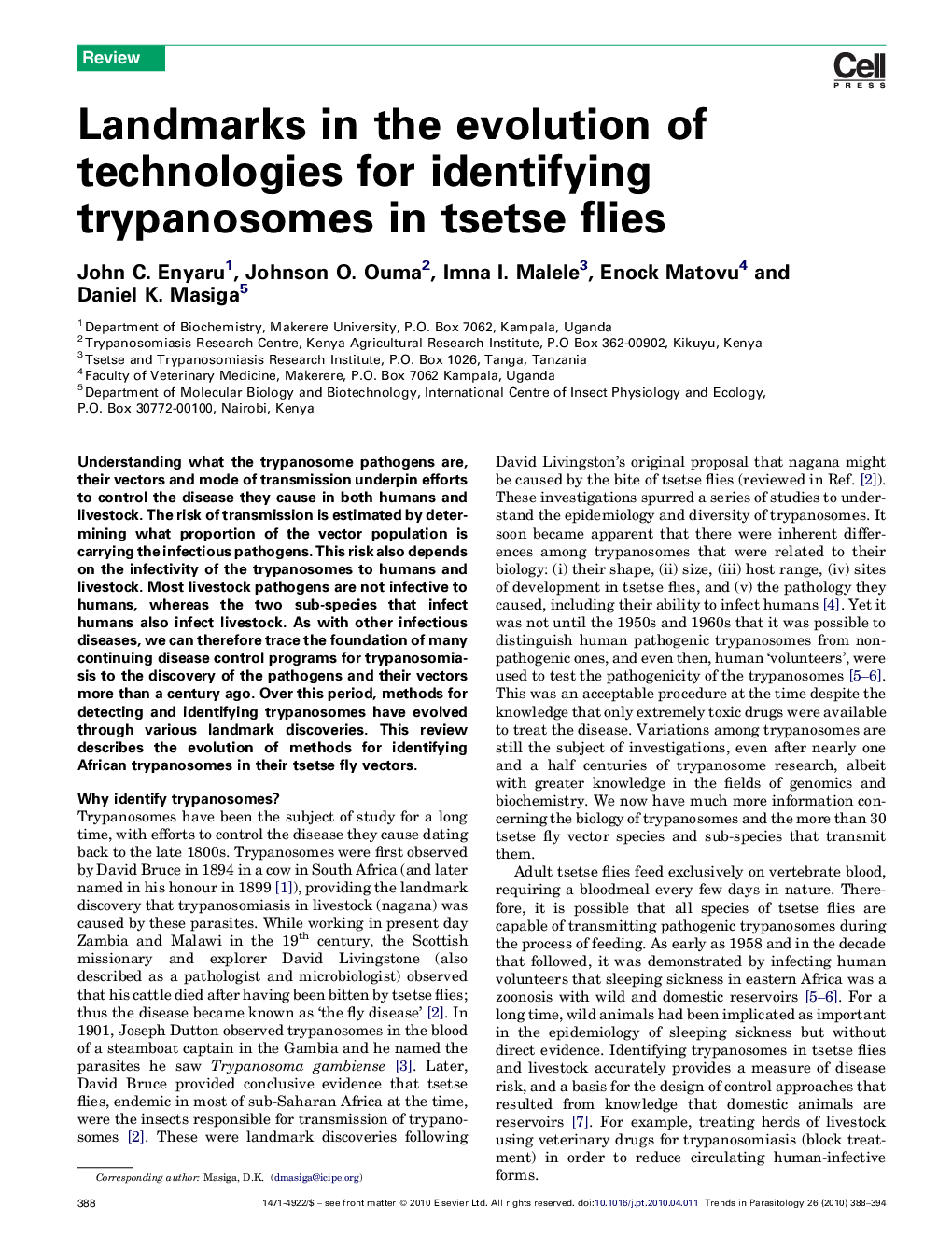| Article ID | Journal | Published Year | Pages | File Type |
|---|---|---|---|---|
| 3423466 | Trends in Parasitology | 2010 | 7 Pages |
Understanding what the trypanosome pathogens are, their vectors and mode of transmission underpin efforts to control the disease they cause in both humans and livestock. The risk of transmission is estimated by determining what proportion of the vector population is carrying the infectious pathogens. This risk also depends on the infectivity of the trypanosomes to humans and livestock. Most livestock pathogens are not infective to humans, whereas the two sub-species that infect humans also infect livestock. As with other infectious diseases, we can therefore trace the foundation of many continuing disease control programs for trypanosomiasis to the discovery of the pathogens and their vectors more than a century ago. Over this period, methods for detecting and identifying trypanosomes have evolved through various landmark discoveries. This review describes the evolution of methods for identifying African trypanosomes in their tsetse fly vectors.
